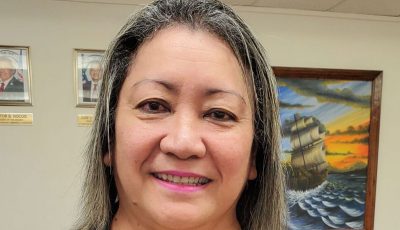Aloha Medical Mission in Tuguegarao
Last February, I wrote of the Aloha Medical Mission’s work in Tuguegarao, Cagayan, not necessarily to praise my brother who organized it and his colleague’s commendable efforts, nor focus on the apparent need for medical attention by many in Pea Eye, as it is to highlight the work of volunteers being in a country that derived its national anthem from the “March of the Volunteers.”
I intended to be in Tuguegarao while the AMM was conducted. I do not have any medical skills (“He aborted from a pre-med course with a weak stomach for open wounds and bloody sights,” my brother claims, “so he concentrated on the nurses”) but knowing the local town, I could have been a useful go-fer. A change in economic circumstance made me cancel the intended drop-in. With my brother’s nurse wife, my nurse sister and her dentist husband, and my Rotarian brother orchestrating the whole show, the family was sufficiently represented in the noble effort in our old hometown. My vanity was satisfied.
I thought no more of it, until old Dong Bei turned on one of its vaunted cold days, so I stayed indoors, surfed through cyberspace to escape all the obvious chores waiting to be done. I am also a self-appointed chronicler of events among my siblings, being the “retired” writer in the family, which I failed to do last month, so I set out to rectify my negligence. I checked the AMM in Tuguegarao on the ‘Net since I had not heard my siblings share a report.
Online, I first read my nieces’ report in her blog titled “Lasing! Lasing!” (She loves her brew.) She is a physical therapist in the Seattle area and she wrote of her remembered experiences, even with a photo of her electrician hubby attending to the Mission’s electrical needs. A happy-go-lucky girl growing up, and the runt in her family, we treated her as a bona fide spoiled brat (she relished the role), known for many rebellious infractions her Dad would rather not be reminded of. She was recalling incidents in what she titled the best “working vacation” she ever had, including an unexpected C-section delivery where the parents allowed the volunteers to name the healthy child. She was writing with not a shortage of tears to go along in the telling.
My brother posed with his security retinue and directed logistic traffic, his eldest son roved with a camera, my sister-in-law nursed for one of her former classmates who volunteered as an MD, my brother-in-law dentist improvised to pull teeth without the instruments he uses in his practice in Honolulu (handheld flash lights on the cavity?), with his nurse wife assisting, and it dawned on me that a good percentage of the out-of-the-country volunteers were members of my family. My tear ducts involuntarily joined my niece’s cries of joy.
Then there was the slew of local volunteers who joined the visiting contingent in delivering the needed medical attention to the more than a thousand clients that availed of the services, all looking energetic and pleased in their participation. Being a professional volunteer most of my career, I understand the liberating freedom of just deciding to do something just for the heck of it, or, more properly, because one thinks it is worth doing. Not for anyone’s sake, but for one’s own spirit health and nurture, just doing it!
I remember walking the lagoon pathway earlier this year where I once hauled water on my pickup during one of Saipan’s droughts to water the plants on the mini-amphitheater near the Japanese tank-on-the-bunker on Beach Road corner Quartermaster’s Road. I added my touch with a tree planted between the bunker and the restroom by the creek that was supposed to be solar-powered and water catchment-equipped. My first tree died so a second one replaced it with the help of Japanese Rotarians during a photo-op afternoon. I nursed the tree into maturity. I was curious during my last visit if the tree was still there.
It is still there. It had not grown much as the upper half seem to attract vandals that also keep writing offensive graffiti on the still non-functioning restroom but the tree was still there, the girth of its trunk a few inches stouter than before. The value of the tree is not the negligible absorption of the street traffic’s carbon monoxide, or its releasing oxygen into the atmosphere. It is valuable for people like me, and perhaps the Japanese Rotarians if they ever returned, to revisit, as a symbol and extension of one’s expenditure.
In like manner, the impoverished clients served at AMM Tuguegarao might be grateful for the attention they received at no cost to them as materials and medicine were donated from elsewhere, but the experience of those involved in the five days of service was evidently priceless. My brother’s photography captured a contagious depiction of the mission (visit www.alexvergaraphotography.com). Or, just Google the title of this column, and if you chance on my niece’s blog, make sure to have a box of tissues within reach!
Afterwards, go to Red Cross. I am sure John Hirsh will gladly tell you where to go!
Jaime Vergara previously taught at SVES in the CNMI. A peripatetic pedagogue, he last taught in China but makes Honolulu, Shenyang, and Saipan home. He can be reached at pinoypanda2031@aol.com.



























